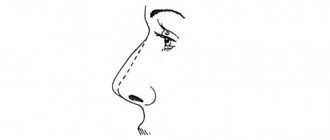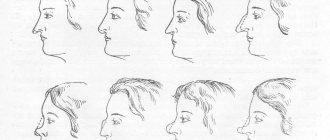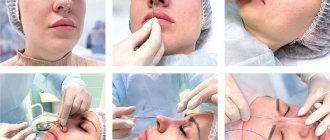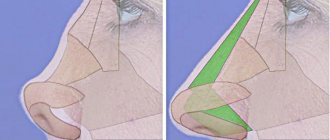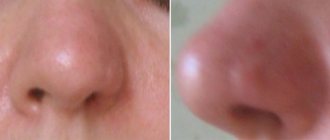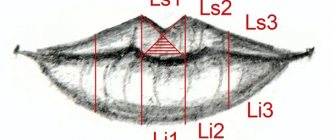When using online services of the website evropa-clinic.ru. The visitor provides personal information about himself: last name, first name, contact phone number, e-mail.
In accordance with the requirements of Articles 9.10 of the Federal Law of July 27, 2006 No. 152-FZ “On Personal Data”, I confirm my consent to processing by authorized employees of LLC MC “EUROPA”, location: Russia, 153000, Ivanovo, Markhlevskogo Lane, 17 (hereinafter referred to as the “Operator”) of my personal data, including: last name, first name, patronymic, email address, contact phone number, data on the state of my health (including, but not exclusively, medical history, diagnosis ), about cases of seeking medical help, a list, duration and volume of consulting services provided, my photo and video images, other personal data processed for the purpose of providing consulting services).
I grant the Operator the right to carry out all actions (operations) with my Personal Data, including collection, systematization, accumulation, storage, updating, modification, use, depersonalization, blocking, destruction.
The visitor, by providing his personal data on the website, expresses his consent to the processing of his personal data by the website administrator and/or other persons whose information is presented on this website, namely: collection, systematization, accumulation, storage in the information system, extraction, use, transfer, depersonalization, removal from the information systems of the website administrator. I also give my consent to the Operator to take photos and videos, audio and video recordings (which will also include my photo and/or video image) of sessions when providing me with consulting services.
The Operator has the right to process my Personal Data by entering it into an electronic database.
In the process of the Operator providing me with consulting services, I grant the right to the Operator’s employees to transfer my Personal data to other officials of the Operator carrying out the Operator’s business activities and to third parties authorized by the Operator to process personal data in connection with the technical need for processing in the Operator’s databases, subject to mandatory compliance with the terms and conditions confidentiality of the processed data, the Customer of the consulting services provided to me and his authorized representatives.
This consent is valid for an indefinite period.
The storage period for my Personal Data corresponds to the validity period of this consent.
The Operator informed me and I agree that I have the right to withdraw my consent to the processing of Personal Data by submitting a corresponding written statement on paper to the Operator against signature. If the application is sent by mail or transferred to the Operator through another person, then the authenticity of the signature on it must be notarized.
Blepharoplasty
Self-care after surgery
Follow these guidelines for caring for yourself after surgery.
Wear dark sunglasses during your trip home. You may have sensitivity to light.
The ointment used during surgery may make your vision blurry. This is temporary and usually goes away within 24 hours. Do not wear contact lenses for at least 2 weeks after surgery. You can wear glasses.
For the first 3 to 4 days after surgery, eat small, soft foods. You can try yogurt, soft cheeses, well-cooked vegetables, soft fruits, soft bread, pasta, ground meat or soft meat.
It is important to remain calm and quiet for the first 3-4 days after surgery. To do this, avoid physical activity such as heavy lifting and exercise.
Tell your doctor if you have nausea (a feeling of vomiting) or cold symptoms, and it is important to avoid sneezing, coughing, and vomiting as much as possible. This may increase blood pressure and cause bleeding in the areas where surgery was performed.
For 2 weeks after surgery, avoid bending over or lifting objects heavier than 3-5 kg. Talk to your surgeon before returning to normal activities, such as heavy lifting and exercise.
For 2 weeks, or as directed by your surgeon, elevate your head with 2 to 3 pillows while resting and sleeping. This will help prevent swelling in the areas where surgery was performed.
After surgery, your eyes may be swollen and bruised. Typically, your eyelids swell more early in the morning, and the swelling subsides as you sit or walk during the day.
You may also experience swelling in your cheeks and jawline. This will begin to subside 2-3 weeks after surgery.
Cold compresses and eye drops
Apply a cold compress to your eyelids every 10 to 15 minutes (10 to 15 minutes on, 10 to 15 minutes off) for the first 24 hours after surgery. Try to do this as many times as you can while you are awake. After 48 hours, cold compresses are not as effective.
Use the eye drops your doctor prescribes. Do not pull your eyelids down while using eye drops.
Showering and applying makeup
You may shower below the neck immediately after surgery. Do not shower head first until your surgeon confirms that it is safe to do so. This usually happens on the 5th day after surgery. You can gently wash the area below the eyes with a damp or soft terry cloth. You can use dry shampoo on your hair. Once you are safe to shower with your head, you can wash your eyelids and hair with a mild product such as baby shampoo.
For 2 weeks after surgery, do not apply creams or cosmetics (such as eye shadow, eyeliner, or mascara) to the areas where surgery was performed. You can use creams and cosmetics on the rest of your face.
Follow-up
Your stitches will be removed at your follow-up appointment between 2 and 7 days after surgery.
| DOCUMENTATION | ACTIVITIES | PRICES | ARTICLES |
Rhinoplasty – plastic surgery to correct the shape and/or size of the nose
Rhinoplasty (from the Greek rhinos - nose) is a plastic surgery to correct the shape and/or size of the nose, the purpose of which is to improve its aesthetic appearance and eliminate congenital or acquired aesthetic defects. At the Ivanovo Hospital you can find out prices for facial surgeries by clicking on the link. Rhinoplasty is also carried out in case of defects that are not always visible (deviated nasal septum), the presence of which makes nasal breathing difficult. In the latter case, therapeutic and restorative rhinoplasty is performed, the result of which is the correction of the location of the nasal septum and the normalization of breathing through the nose.
plastic surgery to correct the shape and/or size of the nose tel: (4932)410665
Indications for surgery The main indication for surgery is the patient’s dissatisfaction with the appearance of his own nose, which may be caused by:
presence of a hump on the nose; thickened tip of the nose; drooping tip of the nose; snub nose; saddle shape of the tip of the nose; elongated shape; excessively wide wings of the nose, etc. In a wide range of cases, indications for surgery are deformities of various kinds resulting from trauma, as well as, as already mentioned, a curvature of the septum (as well as the shape of the nose as a whole), which can be congenital or also result from trauma.
Preoperative stage This is the most important stage at which:
the patient is examined to identify the specifics of the problem; the necessary analyzes are collected; Rhinomanometry is performed - a study of intranasal pressure and air flow to determine the condition of the nasal septum, the need for corrective surgical procedures, possible risks and complications (the procedure is also performed after the operation); the patient is consulted; modeling of the future shape of the nose is performed. Modeling is an extremely important stage, during which the specialist and the patient must come to a “common denominator” - choose the optimal model of the shape of the nose. 3D modeling allows you to provide maximum clarity and get a clear idea of the future shape and proportions of the nose. The specificity of modeling is that the model sets a conceptual version of the size and shape, which the doctor will focus on during the operation with the greatest possible accuracy. At the same time, the patient cannot always realize that the model that seems most attractive to him is justified from an aesthetic point of view or is feasible in principle. That is why it is extremely important for the surgeon to convince him of the correctness of this or that option, while finding, at the same time, a “golden mean” that will suit the patient. Of course, an adequate understanding of the problem and its solution by the patient himself also plays a role here, which the specialist must verify during conversations and consultations.
Operations Depending on the characteristics and complexity of the problem, the scope of medical intervention, the duration of the operation can be from half an hour to three hours. As a rule, the operation is performed under general anesthesia. The most complex options for surgical intervention involve the surgeon working not only with cartilage, but also with bone tissue (for example, removal of the corbin, septoplasty, etc.).
In this case, the operation can be performed either open or closed. In the first case, incisions are made on the columella - the front part of the nasal septum. In the second - inside the nasal cavity, under the wings.
When removing a hump, the scope of surgical intervention includes both cartilage and bone tissue. Having gained access to the problem area through the incisions, the surgeon separates part of the soft tissue, removes a certain amount of cartilaginous tissue and then removes part of the bone tissue located above, modeling the desired shape of the nose. If necessary, an osteotomy is performed - parts of the lateral slopes of the bone are cut and shifted, forming a new nasal bridge. Upon completion of the procedure, a special fixing bandage is applied to the nose. During septoplasty (reconstruction of the nasal septum), a part of the soft tissue is separated with a rasp, after which part of the curved cartilage and bone are removed, and the sheets of soft tissue are juxtaposed. One of the surgical options (depending on the specifics of the problem) is straightening the cartilage, which does not require removal of part of its tissue. When correcting snub nose, saddle shape, or drooping nasal tip, the scope of surgical intervention usually involves only working with cartilage and soft tissues. In particular, to correct snub nose, the autotransplantation method is used - part of the patient’s own cartilage tissue is implanted into the area of the bridge of the nose to fill the required volume. When correcting a drooping nasal tip, part of the volume of cartilaginous tissue is removed, and part is redistributed, stitched in a fixed position. Often, with these and other operations, additional contouring of the nostrils is possible. Rehabilitation period After surgery, as a rule, the patient stays in the hospital, under the supervision of doctors, for two days. After rhinoplasty and a number of other operations, it is necessary to wear a butterfly bandage for 10-14 days. Characteristic swelling occurs in the first 2-3 days; within a week, the nose acquires an aesthetically acceptable external appearance. The full recovery period can take up to six months.
Contraindications: age factor (surgeries are not indicated after 40 years, which is associated with a slowdown in tissue regeneration processes and an increasing risk of complications); mental illness; poor blood clotting; diseases from the field of oncology; heart and vascular diseases; diabetes; acute viral infections; liver and kidney diseases.
